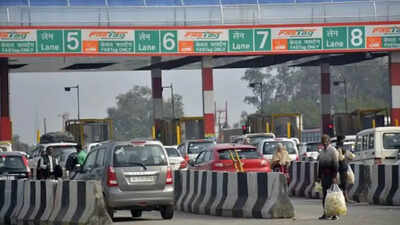India’s New FASTag Toll System: Rs 3,000 Annual Pass

India aims to make highway travel smoother. The government is considering a new toll system. This system will allow you to pay Rs 3,000 once a year. After that, you can use national highways as much as you like. This plan is part of a larger effort to improve road travel. It will be more affordable, efficient, and use digital payments. You won’t need to recharge your FASTag often.
What is the FASTag Annual Toll Pass?
The Indian government is introducing a new FASTag Annual Toll Pass. This will change how tolls are collected on national highways and expressways. With this pass, private vehicle owners can pay Rs 3,000 once a year. Then, they can travel without paying tolls each time. This will reduce traffic at toll booths and make payments digital. There’s also a plan to charge based on distance. Using GPS and automated tracking, this system aims to make travel easier. It will also ensure toll operators get paid.
FASTag Annual Toll Pass: Two Payment Options
Annual Toll Pass
- The main idea is a single payment per year. Car owners can pay Rs 3,000 annually. Then, they can use all national highways, expressways, and state expressways without limits.
- This fixed fee system removes the need to reload FASTag accounts. You won’t have to monitor individual toll deductions for each trip.
- This system is great for frequent users like commuters and transporters. They can use highways all year without extra costs.
- This flat rate system fits with the government’s vision of digital governance. It simplifies payments and reduces dependence on transaction-based tolling.
Distance-based Pricing
- The annual pass system is good for heavy users. But the new policy also considers less frequent users. For them, a flexible pay-as-you-go model is suggested. It costs Rs 50 for every 100 kilometers.
- This ensures that occasional users don’t pay a high annual fee. They can pay based on the distance they travel, making the system fairer.
This two-pricing model fits the government’s vision. It aims to create a scalable tolling solution for all users. Those who don’t want an annual payment can still use highways. They can pay a reasonable and predictable tariff without financial disadvantage.
Benefits of FASTag Annual Toll Pass
- No New Documentation Required
Vehicle owners using FASTags won’t need extra documents. They can adopt the new annual pass system easily. This ensures continuity for millions of existing FASTag users. It prevents confusion or disruptions common in large policy shifts. - Cancellation of Lifetime FASTag Plan
The earlier proposal for a Rs 30,000 lifetime FASTag valid for 15 years has been scrapped. This signals a shift towards more flexible and user-friendly tolling models. - Compatibility with Existing Infrastructure
The new system works seamlessly with current FASTag technology and accounts. This makes adoption easier and more efficient.
Government’s Plan for Seamless and Barrier-Free Toll Booths
The policy also aims to remove physical toll barriers at highway booths. The government plans to phase out booms and old sensor-based systems. Instead, they will adopt a totally barrier-free tolling regime. This innovation seeks to eliminate bottlenecks caused by physical toll collection. It will reduce congestion, vehicle idling, and fuel wastage.
Using barrier-free tolling technologies like automatic number plate recognition (ANPR), satellite-based location, or GPS-enabled technology, cars can drive through toll zones at regular speeds without stopping.
When Will the New FASTag Annual Toll Pass Be Implemented?
So far, the government has not given official details about the new tolling system. Reports say planning is advanced, but no official policy announcement has been made. This move is an encouraging step in India’s push to develop transport infrastructure and provide citizen-centric digital services.



